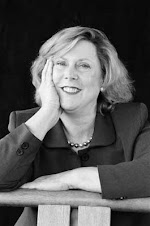Guest Author: Nicole Zaro Stahl
Forget all those old notions about rosé wine—that it’s sugary-sweet, that it’s produced as an afterthought by mixing excess red and white grapes. Au contraire! This frequently misunderstood category stands on equal footing right alongside its red and white counterparts. In fact, today rosé accounts for some 30% of total wine consumption in France, where it was first crafted more than 2,000 years ago.
Americans are catching onto the trend. U.S. retail sales of
imported rosé wines have grown by double digits in each of the past 10 years. A
substantial number of the imported labels hails from Provence, the romantic landscape
of alternating hills, gorges, and lush river valleys that runs 150 miles inland
along the sun-kissed French Mediterranean coast.
The largest rosé-producing region in the world, Provence
presents a mosaic of terroirs hospitable to the grape varieties most commonly
cultivated to give the authentic blush wine its refreshingly crisp, dry taste:
Grenache, Cinsault, Syrah, Mourvėdre,
Tibouren, Cabernet Sauvignon. The grape skins are removed before fermentation
to attain the characteristic pale pink color and fruity aroma.
In large part, rosé’s surging popularity can be attributed to
its versatility. From ski slopes to sailboats, rosé is in demand year-round as
an apéritif, accompanying the main meal, or with dessert. The price point is
attractive, too: many Provence wineries export AOP (Appellation d’Origine
Protégée) vintages that sell for $20 a bottle or less at retail.
Here are three 2014 rosés well worth decanting.
Château d’Esclans was established by Sacha Lichine, son of
Alexis Lichine, the legendary wine expert and author of the Encyclopedia of Wines and Spirits. While
the domaine’s chalky-clay slopes produce some of the world’s most exclusive
rosés, “Whispering Angel” Côtes de
Provence Rosé 2014, at $20 per bottle, offers a pleasantly affordable
entrée into the highly esteemed brand. Described as a “chameleon,” the 13%-ABV Whispering
Angel will compliment any meal, from seafood or steak to barbecue or pan-Asian
cuisine.
In addition to its unique terroir of schist and clay soil,
Domaine de la Fouquette is known for “green” growing and harvesting practices.
The estate’s pale and fruity Rosée
d’Aurore Côtes de Provence 2014 boasts
intense, complex flavors of citrus. This is the rosé to serve at cocktail
hour with nibbles of olive tapenade or for mains like bouillabaisse, the
classic Provençal fish stew. The 12.5%-ABV Rosée d’Aurore sells for less than
$20 per bottle.
The four Brun brothers, the third generation at the helm of
Château de Brigue, blended the
latest technology (including the use of screw caps) with the agronomic
savoir-faire of their engineer father to produce Brigue Provence Côtes de
Provence 2014. This entry-level rosé (12.5% ABV), which retails at $13.50 per bottle, offers notes of lemon, pear,
grapefruit, and mineral. The fruity, fresh and balanced wine pairs well with
fish, seafood, poultry, stews, fresh vegetables, and
other Mediterranean classics.
So the next time you’re debating between red and white,
think pink instead, and chose a rosé. A votre santé!
About our Guest Author:
Nicole Zaro Stahl is a professional business writer based in San Francisco who covers food, beverage, technology, distribution, and logistics topics.
Nicole Zaro Stahl is a professional business writer based in San Francisco who covers food, beverage, technology, distribution, and logistics topics.





No comments:
Post a Comment